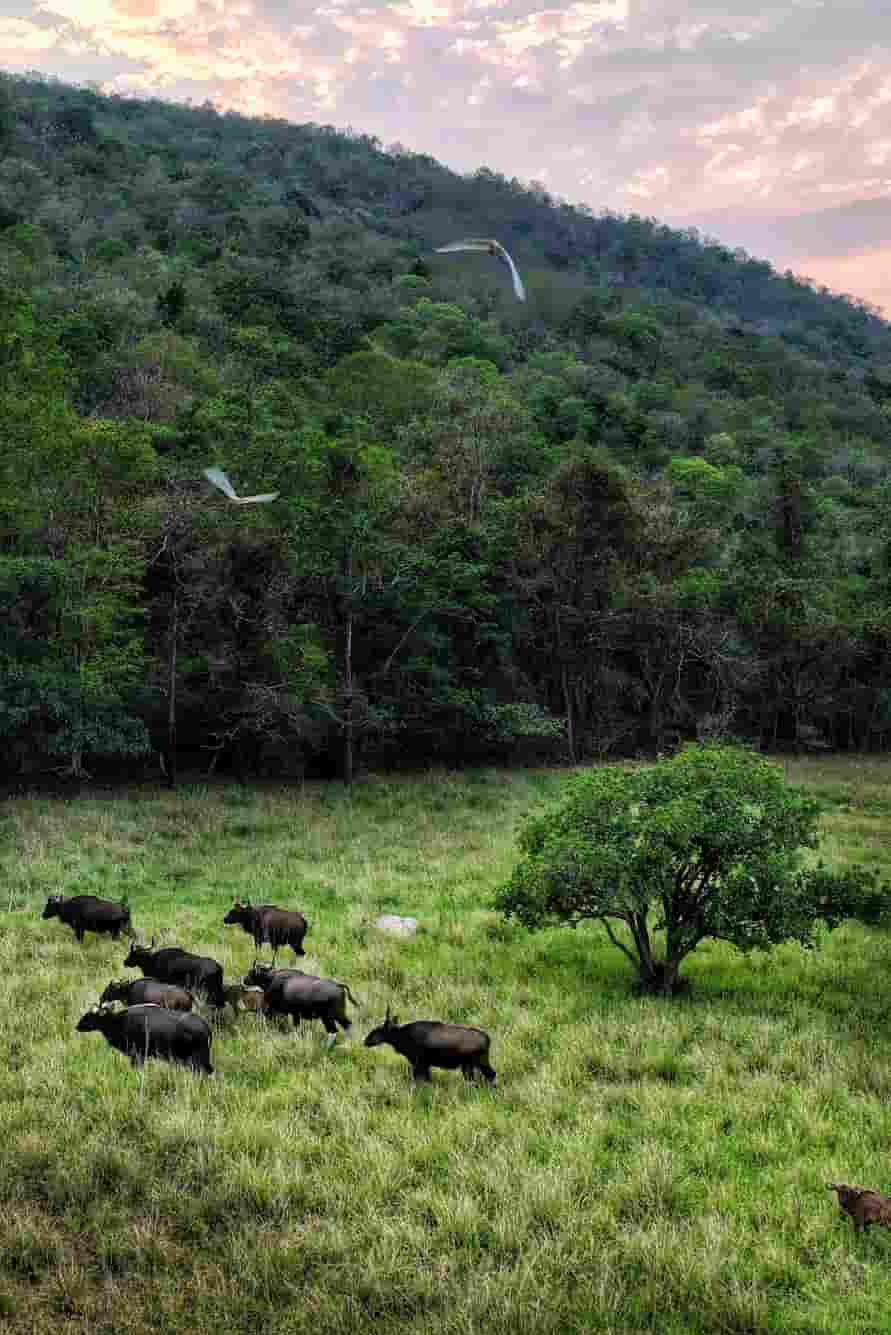

Among the herbivore animals in Debrigarh Wildlife Sanctuary which have registered the highest increase is chital or spotted deer
The recent census conducted at Debrigarh Wildlife Sanctuary located in Odisha’s Bargarh district shows that the efforts and work done by Forest Department officials of the State have paid dividends. The results of the six-day enumeration shows that while the number of carnivore animals has increased, the density of prey creatures that supports the former has also gone up.
Interestingly, the census also showed the presence of a tiger in the sanctuary.
The survey was organised by the Hirakud Wildlife Division from May 29 to June 3. The first three days were dedicated to carnivore sign survey and the last three to herbivore sign survey.
Sharing details with India Narrative Anshu Pragyan Das, Divisional Forest Officer, HWD said: “The herbivore or prey density of Debrigarh is 46. Of this, the population density of chital or spotted deer was found to be the highest. It is 90 per sq. km. Other herbivore species which had high density were wild boar, gaur or India bison found in South Asia and Southeast Asia, sambar or large deer native to the Indian subcontinent and chowsingha, a four-horned antelope which is small creature and found in India and Nepal.”


The Indian Forest Officer added that the presence of 40-60 animals per sq. km. reflects a healthy habitat and that last year this figure was 29.
Das also told India Narrative that the presence of carnivore species too has improved in the reserve. “More than 1,099 carnivore signs were recorded in the sanctuary. Among the top predators were leopards and bears. Approximately the presence of 82 leopards was recorded in DWS this time, while in the last census their number was 70. While this was a positive development, another bright note was the confirmation of the presence of one tiger in the reserve for the last eight months. This is the first time in the last so many decades that a tiger has been recorded in Debrigarh.”
Explaining the elaborate process of monitoring the tiger presence 24 by 7, Das told India Narrative, that 12 teams had been constituted for this work, who reported to three operational control rooms. Further, the mobile numbers of these control rooms had been prominently displayed in 48 villages adjoining the sanctuary to enable people to inform them about the creature.
Going beyond this, the forest officials held regular meetings with the residents of villages. Self-help groups and eco development committees of these villages were sensitised about tiger conservation. For the safety of the people and the animal, mobile patrolling was done by vehicles covering the periphery of the sanctuary daily from 4 p.m. to 6 a.m. the next morning by a sufficient number of forest staff.
“We also offered Rs.1,000 to informers to share details about traps, snares, illegal hooking and poaching attempts. This helped as we were able to stop the entry of poachers twice and recently three illegal intruders carrying country-made guns were arrested by our night patrol squads,” Das informed IN.
Besides crediting the staff and officials for their hard work and strict discipline for the increase in both the prey and predator density, Das also thanked people living in the vicinity of DWS for their effort and help. “The participation of people and protection of interests of forest dependent communities is necessary to achieve this result. Both awareness and enforcement go hand in hand in protection of wildlife and reducing human-animal conflict,” Das observed.
The QS World University 2026 Rankings bring great news for our education sector, as the…
Speaking at the India Global Forum, Union Minister of Commerce and Industry, Piyush Goyal, says…
Amid the ongoing conflict with Iran, Israel's Foreign Ministry said on Thursday that Soroka Hospital…
India's foreign engagements have entered a new phase of dynamism and purpose, driven by its…
Over the last ten years, India’s global footprint has expanded thereby ensuring India’s voice resonates…
The Indian government has launched Operation Sindhu to evacuate Indian nationals from Iran in view…